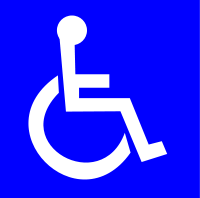The CX-90 has standard driver and passenger side airbags combined with three-point seat belts, a combination which is 29% more effective in preventing injury and death than seatbelts alone.
To maximize occupant safety, the front and second-row seat shoulder belts of the Mazda CX-90 have pretensioners to eliminate dangerous slack in the event of a collision and force limiters to limit the pressure the belts will exert on the passengers.
For enhanced safety, the front seat shoulder belts of the Mazda CX-90 are height-adjustable to accommodate a wide variety of driver and passenger heights. A better fit can prevent injuries and the increased comfort also encourages passengers to buckle up.
The CX-90 has shoulder harnesses for all passengers. Shoulder harnesses are 10% more effective than lap belts in preventing injuries from collisions. Recent studies indicate that lap belts alone may cause as many or more injuries than they prevent.
The CX-90 has standard child safety locks to prevent children from opening the rear doors.
In the past twenty years hundreds of infants and young children have died after being left in vehicles, usually by accident. When turning the vehicle off, drivers of the CX-90 are reminded to check the back seat if they opened the rear door before starting out.
The Mazda CX-90 has standard driver and front passenger side knee airbags mounted low on the dashboard. These airbags helps prevent the driver and front passenger from sliding under their seatbelts or the main frontal airbags; this keeps them better positioned during a collision for maximum protection. Knee airbags also help keep the legs from striking the dashboard, preventing knee and leg injuries in the case of a serious frontal collision.
The CX-90 has standard front seat side-impact airbags and head airbags for all three seat rows, which act as a forgiving barrier between the passengers and the door. Combined with high-strength steel door beams this system increases protection from broadside collisions.
Using vehicle speed sensors and seat sensors, smart airbags in the CX-90 deploy with different levels of force or don't deploy at all to help better protect passengers of all sizes in different collisions. Airbags without smart features will always deploy full force.
The CX-90 has standard four-wheel antilock disc brakes for quicker stops and controlled steering ability, especially under poor traction conditions.
The CX-90 has standard Smart Brake Support, which use forward mounted sensors to warn the driver of a possible collision ahead. If the driver doesn't react and the system determines a collision is imminent, it automatically applies the brakes at full-force in order to reduce the force of the crash or avoid it altogether.
With its standard Smart Brake Support, the Mazda CX-90 is excellent at preventing collisions with pedestrians, according to the Insurance Institute for Highway Safety:
|
|
CX-90 |
| Overall Evaluation |
GOOD |
| Crossing Child - DAY |
|
| 12 MPH |
AVOIDED |
| 25 MPH |
-23 MPH |
| Crossing Adult - NIGHT |
|
| 12 MPH Brights |
AVOIDED |
| 12 MPH Low beams |
AVOIDED |
| 25 MPH Brights |
AVOIDED |
| 25 MPH Low beams |
AVOIDED |
| Parallel Adult - NIGHT |
|
| 25 MPH Brights |
AVOIDED |
| 25 MPH Low beams |
AVOIDED |
| 37 MPH Brights |
-33 MPH |
| Warning Issued-Brights |
2.4 sec |
| 37 MPH Low beams |
-26 MPH |
| Warning Issued-Low beams |
1.5 sec |
The CX-90 Premium has a standard Secondary Collision Reduction System, which automatically applies the brakes in the event of a crash to help prevent secondary collisions and prevent further injuries.
Over 200 people are killed each year when backed over by motor vehicles. The CX-90 Premium Plus/Turbo S has standard Rear Smart City Brake Support that uses rear sensors to monitor for objects to the rear and automatically applies the brakes to prevent a collision.
To provide maximum traction and stability on all roads, All-Wheel Drive is standard on the CX-90.
To prevent wheel-spin and loss of control under poor traction conditions, full range traction control is standard on the Mazda CX-90.
The CX-90 has standard Dynamic Stability Control (DSC), which uses the antilock brake hardware along with powerful software and additional sensors to detect the beginning of a skid. DSC then intervenes by automatically applying the brake at one appropriate wheel, preventing a skid. A National Highway Traffic Safety Administration study showed that skid control systems reduced single-vehicle SUV crashes by 67%.
When descending a steep, off-road slope, the CX-90's standard Hill Descent Control allows you to creep down safely.
The Mazda CX-90 has Daytime Running Lights to help keep it more visible under all conditions. Canadian government studies show that driving with lights during the day reduces accidents by 11% by making vehicles more conspicuous.
The CX-90's lane departure warning system alerts a temporarily inattentive driver when the vehicle begins to leave its lane and gently nudges the vehicle back towards its lane.
The CX-90 Preferred/Premium has standard Parking Sensors to help warn drivers about vehicles, pedestrians or other obstacles behind or in front of their vehicle. The CX-90 also has a standard backup monitor to help drivers see any and all obstacles behind their vehicle, and a standard (Premium Plus/Turbo S) 360° View Monitor to allow the driver to see objects all around the vehicle.
The CX-90's blind spot warning system uses sensors to alert the driver to objects in the vehicle's blind spots where the side view mirrors don't reveal them.
To help make backing out of a parking space safer, the CX-90's standard Rear Cross Traffic Alert uses sensors in the rear to alert the driver to vehicles approaching from the side and Rear Cross Traffic Braking on the Premium Plus/Turbo S automatically engages the brakes to help avoid a collision.
The CX-90's driver alert monitor detects an inattentive driver then sounds a warning and suggests a break. According to the NHTSA, drivers who fall asleep cause about 100,000 crashes and 1500 deaths a year.
For better protection of the passenger compartment, the CX-90 uses safety cell construction with a three-dimensional high-strength frame that surrounds the passenger compartment. It provides extra impact protection and a sturdy mounting location for door hardware and side impact beams. A body-on-frame design has no frame members above the floor of the vehicle.
The CX-90 has standard E911 Automatic Emergency Notification, which uses a global positioning satellite (GPS) receiver and a cellular system to send emergency personnel to the scene if any airbags deploy. Without a GPS response system, if you're involved in an accident and you're incapacitated help may not come as quickly.
The Insurance Institute for Highway Safety does 40 MPH moderate front offset crash tests on new cars. In this updated test, results indicate that the CX-90 is safe:
|
|
CX-90 |
| Overall Evaluation |
GOOD |
| Structure |
GOOD |
| Driver Injury Measures |
|
| Head/Neck Rating |
GOOD |
| Head Injury Criterion |
57 |
| Peak Head Forces |
5 G's |
| Neck Injury Chance |
17% |
| Chest Rating |
GOOD |
| Max Chest Compression |
1 inches |
| Thigh/hip Rating |
GOOD |
| Thigh Forces L/R |
45/45 pounds |
| Leg/foot Rating |
GOOD |
| Leg Forces L/R |
292/315 pounds |
| Restraints |
GOOD |
| Rear Passenger Injury Measures |
|
| Head/Neck Rating |
GOOD |
| Head Injury Criterion |
no contact |
| Neck Injury Chance |
0% |
| Chest Rating |
GOOD |
| Thigh Rating |
GOOD |
| Thigh Compression L/R |
22/22 pounds |
| Restraints |
GOOD |
The Insurance Institute for Highway Safety does 40 MPH moderate front offset crash tests on new cars. In this original test, results indicate that the Mazda CX-90 is safe:
|
|
CX-90 |
| Overall Evaluation |
GOOD |
| Structure |
GOOD |
| Restraints |
GOOD |
| Head injury index |
101 |
| Peak Head G-forces |
no hit |
| Neck Tension |
.7 kN |
| Chest Compression |
30 mm |
| Femur Force |
.3 kN/.2 kN |
| Tibia index |
.45/.37 |
(This test is not comparable to the NHTSA NCAP 35 MPH front crash test.)
A significantly tougher test than their original offset frontal crash test, the Insurance Institute for Highway Safety does 40 MPH small overlap frontal offset crash tests. In this test, where only 25% of the total width of the vehicle is struck, results indicate that the Mazda CX-90 is safe:
|
|
CX-90 |
| Overall Evaluation |
GOOD |
| Restraints |
GOOD |
| Head Neck Evaluation |
GOOD |
| Head injury index |
68 |
| Peak Head Forces |
0 G's |
| Steering Column Movement Rearward |
0 cm |
| Chest Evaluation |
GOOD |
| Max Chest Compression |
22 cm |
| Hip & Thigh Evaluation |
GOOD |
| Femur Force R/L |
.2/.2 kN |
| Hip & Thigh Injury Risk R/L |
0%/0% |
| Lower Leg Evaluation |
GOOD |
| Tibia index R/L |
.4/.34 |
| Tibia forces R/L |
1.4/.9 kN |
(This test is not comparable to the NHTSA NCAP 35 MPH front crash test.)
Side impacts caused 23% of all road fatalities in 2018, down from 29% in 2003, when the Insurance Institute for Highway Safety introduced its side barrier test. In order to continue improving vehicle safety, the IIHS has started using a more severe side impact test: 37 MPH (up from 31 MPH), with a 4180-pound barrier (up from 3300 pounds). The results of this newly developed test demonstrates that the Mazda CX-90 is extremely safe:
|
|
CX-90 |
| Overall Evaluation |
GOOD |
| Structure |
GOOD |
| Driver Injury Measures |
|
| Head/Neck |
GOOD |
| Head Injury Criterion |
104 |
| Head Peak Forces |
no contact |
| Neck Tension |
45 lbs. |
| Neck Compression |
89 lbs. |
| Torso |
GOOD |
| Shoulder Deflection |
.28 in |
| Shoulder Force |
134 lbs. |
| Torso Max Deflection |
1.22 in |
| Torso Deflection Rate |
14 MPH |
| Pelvis |
GOOD |
| Head Protection |
GOOD |
| Passenger Injury Measures |
|
| Head/Neck |
GOOD |
| Head Injury Criterion |
18 |
| Head Peak Forces |
no contact |
| Neck Tension |
89 lbs. |
| Neck Compression |
67 lbs. |
| Torso |
GOOD |
| Shoulder Deflection |
.39 in |
| Shoulder Force |
156 lbs. |
| Torso Max Deflection |
.75 in |
| Torso Deflection Rate |
7 MPH |
| Pelvis |
GOOD |
| Head Protection |
GOOD |
The Mazda CX-90 has achieved the Insurance Institute for Highway Safety's (IIHS) highest rating of “Top Safety Pick Plus” for the 2025 model year. This distinction is based on its exceptional performance in IIHS' rigorous battery of safety tests. Specifically, it earned a “Good” rating in the latest, more stringent moderate overlap front crash test, a “Good” result in the updated side impact test, and a “Good” score in the revised pedestrian crash prevention test.





















